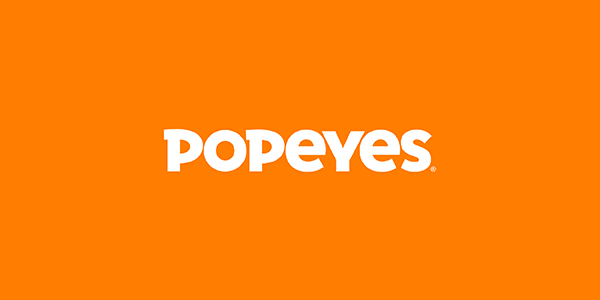Over-The-Top (OTT) Advertising: Complete Guide

Content streamed over the internet is the new norm. As viewers continue to shift their viewing habits to an array of online digital formats, advertisers must respond with relevant, strategic advertising on the available channels. This is the power of OTT advertising.
What is OTT Advertising
If you’re wondering what OTT is, think of it as the way most of your audience is consuming their content. Whatever the industry, whatever the product, the chances are good that the majority of your audience have watched streamed tv programming. This means that they’re OTT viewers and you should consider OTT advertising to get your message in front of them.
OTT is simply the technical name for the streaming content we all know and love. Subsequently, OTT advertising refers to companies’ ad placements and ad strategies to deliver their marketing message on those platforms.
OTT Stands for Over-The-Top
Some people wonder what OTT stands for in media advertising. OTT stands for “over-the-top” because this content goes over the top of the traditional cable and satellite services. Historically, TV setups involved a cable box/satellite box positioned on top of or underneath the TV.
The official name for this type of setup is a “set-top box.” This is because the boxes would sit on top of the older, square TV sets. Once TVs became flat screens, it became impossible to position your cable box on top of them anymore, but the term remained in use.
No set-top box is required for OTT–or streaming–content. Therefore, this content is seen as going “over-the-top” of the traditional cable box. Thus, we use the acronym OTT.
Types of OTT Devices
Simply put, OTT devices are any devices that can deliver streaming content. You’re probably already familiar with them, but examples include:
- Smartphones, tablets, laptops, computers
- Smart TVs
- TVs connected to the internet with an external device (i.e., Roku, Chromecast, Fire Stick, etc.)
- TVs streaming through gaming consoles like Nintendo Switch, PlayStation, or Xbox
- Wi-Fi Blu-ray players
OTT advertising relies on reaching its viewers while they stream content on these devices. Major marketing companies can’t rely on 30-second TV commercials anymore because of the way modern viewers are consuming their video content.
Netflix, Amazon Prime, Hulu, and the other apps viewers use to stream their favourite content are called VOD services, and they’re called that for a reason. VOD stands for video on demand, meaning viewers get the content they want, exactly when they want it. As a result, over-the-top advertising needs to come to the viewer, whereas traditional linear TV ads do not.
Types of OTT Ads
A company has three basic options when planning its OTT advertising strategy. The options available are:
- Publisher Direct: Companies communicate directly with an OTT content provider. This option gives much more control but can be costly and only offers limited exposure.
- Platform Direct: Ads would be purchased directly from the provider of an OTT device. Examples would be buying ad space from Roku or Fire TV.
- Programmatic: In this method, Demand-side platforms (DSPs) like StackAdapt leverage AI technology to optimize ad pricing and placement. Programmatic offers more cost-effective bidding and better targeting, but companies may have less control over their campaigns.
How Does OTT Advertising Work
Much like with original TV advertising, companies can purchase over-the-top advertising via a guaranteed media buy or real-time programmatic bidding. A guaranteed media buy offers the advertiser fixed pricing and impression numbers based on the audience reach and ad frequency. These aspects of the advertising agreement would be negotiated in advance.
If an advertiser opts to engage in programmatic buying through a DSP like StackAdapt, they’ll be able to browse offerings for ad placement and inventory. Leveraging a real-time bidding environment for your OTT ad placements can offer you:
- Competitive pricing
- Deep, data-driven targeting and analytics
- Precision reporting
- Real-time optimization and flexibility
Strategically using these features of OTT advertising will only strengthen the performance of other platforms like your display, native, and video advertising as part of an overall, holistic campaign approach.
Benefits of OTT Advertising
In addition to some of the high-level features mentioned above, there are several other reasons to consider OTT advertising. Here are some of the most impactful examples:
- Consumer Preference. While it’s true most viewers don’t like ads, they also don’t like wasting money. Ad-supported streaming services are a much cheaper option than traditional cable or satellite providers. This has led to the “cord-cutting” phenomenon.
- Captive Audience. Viewers typically can’t skip OTT ads. As a result, more viewers are likely to see your message, and your video ads will have higher completion rates. And, since your consumers know they’re watching ad-supported content, they have no problem having to watch your ads. It’s a small price to pay for getting to watch their favourite content for free.
Common Challenges of OTT Advertising & Solutions
OTT advertising is an effective platform for reaching your audience, but no platform is perfect. Here are some of the drawbacks of OTT ads you should be aware of:
- Multiple Platforms. Each OTT platform is different and, as a result, has different advertising requirements. There’s no “universal language” for OTT advertising which can sometimes pose a challenge for overall advertising campaigns.
- Solution: StackAdapt applies an audience-first approach to their ad-buying. Companies don’t have to worry about being platform-dependent. We’ll find where your audience is hanging out online and meet them where they are, allowing you to automatically serve the most relevant audience from one platform.
- Format Limitations. While ads being clickable and unskippable provides some significant benefits, they can also be a drawback. Advertisers can only use a particular ad format to meet the provider’s specifications.
- Solution: StackAdapt’s suite of ad strategy tools will allow you to test your ads to see which works best for your audience on their chosen platform. You’ll also be given access to myriad creative options through the StackAdapt Creative Studio.
Keep a watchful eye out for these pitfalls as you strategize and launch your campaigns. Doing so will allow you to get the most out of your OTT advertising while minimizing the potential downside.
Linear TV vs OTT vs CTV Advertising
You’ll see these three terms used often in the world of TV advertising. When it comes to OTT vs. CTV, sometimes these terms are used interchangeably, but that can be misleading.
OTT refers to the content your audience is streaming on apps like Netflix, Hulu, and Amazon Prime. CTV, or connected TV, refers to the devices used to stream that content. These can be Smart TVs, gaming consoles, and TVs with peripheral CTV devices like Chromecast, Amazon Fire Stick, and Roku. Linear TV refers to traditional broadcast TV and its advertising options.
The Future of OTT
Other online content like blogs, news articles, social media platforms, and e-commerce ads aren’t going away. However, we’ve even seen a push toward video on these platforms as well. While these necessarily wouldn’t be considered OTT channels, they prove that the audience (and demand) for video content is growing.
Despite these leaps forward in technology, advertisers still need to focus on solid marketing fundamentals. Your message needs to be displayed where your audience’s eyes are looking, and it seems like those eyes will continue to be pointed toward OTT platforms.
OTT in StackAdapt
It pays to work with professionals to get the most out of your OTT advertising. The StackAdapt platform’s features can help you and your team maximize your video marketing efforts.
Discover what powerful tools like AI technology and our innovative strategy tools can do for the growth of your business. Request a demo today to see how StackAdapt can put programmatic OTT ads to work for you.
OTT Advertising FAQs
OTT advertising is advertising that’s delivered through “over-the-top” media services like Netflix, Hulu, or Amazon Prime.
An OTT device is any device that can stream OTT content via one of the apps mentioned above or a similar platform. These devices include but are not limited to: smartphones, tablets, laptops, and computers.
An example of OTT advertising is an ad that plays during the middle of a show streaming on Netflix, Amazon Prime, or Hulu. These ads are often unskippable and have higher completion rates than other advertising mediums.






